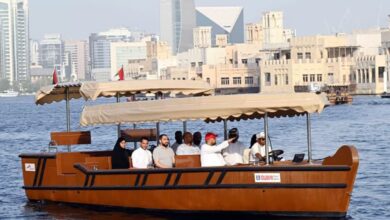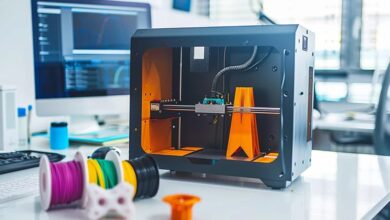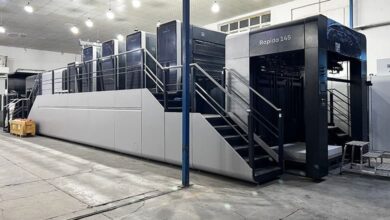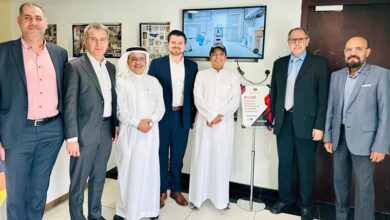Rashid Printers Goes 3D
Ajman based Rashid Printers recently invested in 3D printing technology from Irish company MCOR. This investment shows that 3D printing is gaining momentum in our region.
Mcor’s unique paper-based 3D printer is very affordable and instead of expensive plastics, they build objects out of cut-and-glued sheets of standard 80 GSM office paper. That means printed objects come out at between 10-20 percent of the price of other 3D prints, and with none of the toxic fumes or solvent dips that some other processes require.
On the other hand since it uses standard paper, you can print onto it in full color before it’s cut and assembled, giving you a high quality, high resolution color “skin” all over your final object. Additionally, if the standard hard-glued object texture isn’t good enough, you can dip the final print in solid glue, to make it extra durable and strong enough to be drilled and tapped, or in a flexible outer coating that enables moving parts – if you don’t mind losing a little of your object’s precision shape.
The process is fairly simple. Using a piece of software called SliceIt, a 3D model is cut into paper-thin layers exactly the thickness of an 80 GSM sheet. If your 3D model doesn’t include color information, you can add color and detail to the model through a second piece of software called ColorIt.
Next, a regular CMYK inkjet printer prints each slice of the model onto a separate sheet of paper, with a ~5 mm-wide outline of the required color of the bit that will end up showing once it’s assembled. The stack of printed slices is then loaded into the Mcor IRIS machine, which uses a process called selective deposition lamination.
Each sheet is laid down, and its slice shape is cut into it. Then a print nozzle lays soft glue all over the non-essential parts of that sheet that will be broken away after manufacture. A second, high density glue is applied to the sections of the paper that will be used to form the final model. Then, the next sheet is drawn over the top of it, and the stack is pressed up against a heat plate that seals the two layers together.
Once all layers have been cut, glued and pressed together, the object comes out of the printer as a chunky sheaf of paper. But the waste material, with its softer glue, is slightly flexible and pre-cut into little cubes, so it pulls away quickly and easily from the much tougher, denser material of the object itself. The process can be seen in this video:
Even without an outer coating, the final objects feel very solid – something like a medium density wood feel – and the print detail can be truly fantastic, miles ahead of what some other 3D printers are able to achieve. Some of the samples we looked at had started to peel apart a little bit – but then, these were road-weary trade samples that had been handled by hundreds of people. In general they felt very solid.
Arab Printing Press in Lebanon had also opted for MCOR technology.
Mcor Ltd is manufacturer of the affordable, full-colour line of 3D printers. The company’s 3D printers are used by ordinary business A4 and letter paper as the build material. Established in 2004 with a team of specialists in the area of 3D printing the company operates internationally from offices in Ireland, the UK and America.
Mcor also announced that it has added More Than Printing (MTP) as its Authorized Reseller in Lebanon, Iraq, Syria, Jordan and Ivory Coast. MTP will sell and support Mcor’s IRIS and Matrix line of 3D printers in the Middle East and Ivory Coast across all vertical market segments.





